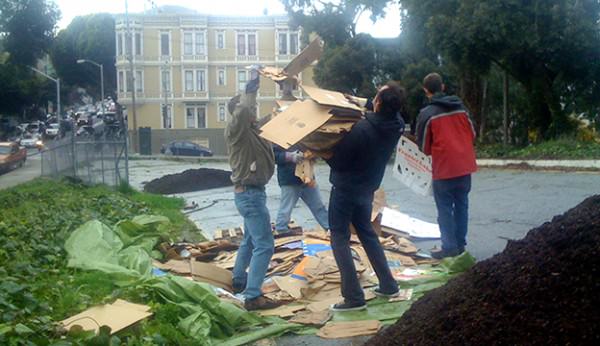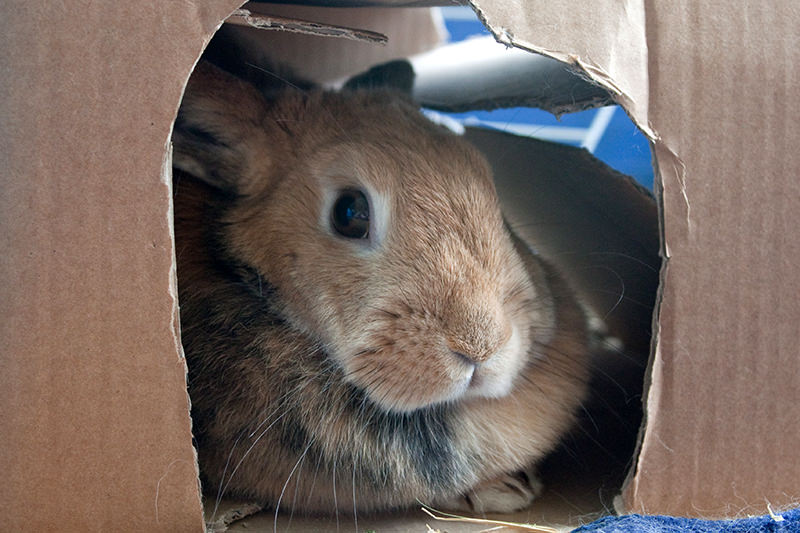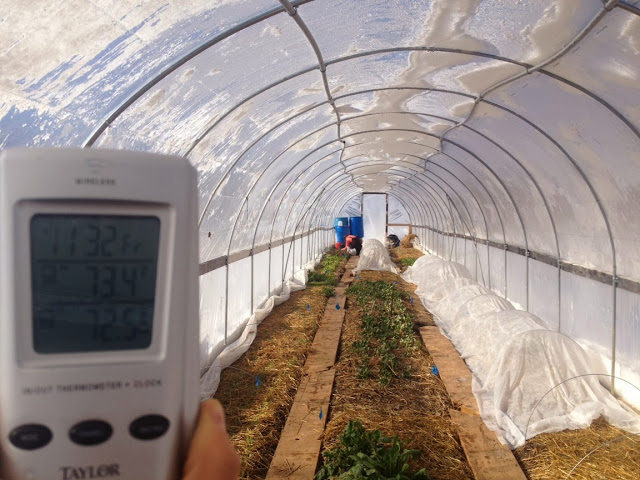
Cardboard is more valuable than gold to any urban farmer. It’s rich in carbon, has dozens of uses, and when flattened, boxes can be stored in a relatively small space. To get your hands on a bounty of cardboard, visit local offices, schools, or even make an early morning visit to the grocery store while they are stocking shelves.
Here is a list of the many ways we used cardboard on our urban homestead in Baltimore. When putting any of these projects into practice, be sure to use cardboard without gloss or dyes, and remove any tape or stickers.
Fun For Rabbits

During our time raising urban livestock, we bred several American Chinchilla rabbits for manure, fur and meat. One of my concerns while we owned the rabbits was our very limited amount of space. As an ethical animal owner, I wanted to ensure that our rabbits were happy and healthy. Cardboard was the answer!
Every few days, I put a fresh cardboard box into each rabbit cage. The box provided endless hours of amusement and exercise as the rabbits dug, nibbled and tossed the box around. They spent much of their time sleeping in the boxes, as well. Because the animals were in wire cages, the cardboard provided valuable bedding and comfort. As an extra bonus, the cardboard usually collected the rabbit urine and manure. We used the soiled boxes to mulch our garden over the winter to add lots of lovely fertilizer.
Biodegradable Mulch
Sheet mulching garden beds—aka lasagna gardening—is an incredibly effective permaculture technique to block weeds and promote healthy soil. Our very first step when creating our urban farm was laying down a row of cardboard then covering with compost. For my next garden, I plan to replicate this technique, laying out several lasagna beds and allowing them to decompose for several months before I start growing.
Garden Walkways

To block weeds and build walkways for our urban farm, we modified the sheet mulching technique. Instead of putting down compost on top our row of cardboard, as we did in the garden beds, we added a layer of wood chips to create walking paths. The cardboard plus wood chip combination helped to block weeds and create rich underground habitats for a healthy soil microbiome between our garden rows.
Compost Worm Habitat
It’s great to have a stockpile of cardboard pieces to layer into your worm compost bin. Because urban homesteaders usually have an excess of nitrogen-rich food waste, sandwiching the kitchen and garden scraps between layers of cardboard helps create a healthier compost mix. The worms seem to be attracted to the decomposing sheets of cardboard, which retain a nice dampness and block out light, creating the perfect habitat for red wigglers.
Pantry And Seed Storage
If you think mason jar makes the most beautiful storage container for those dried flowers, herbs and seeds, think again. That glass jar might cause your painstakingly collected mint tea to turn to mold if there is even a little bit of moisture, and light can cause essential oils to break down. The ideal environment for storing dried seeds and herbs is dry and dark. A closed cardboard box can provide better air circulation and block light for optimal storage for your pantry items.
What are some of your favorite ways to recycle cardboard into a valuable resource?




